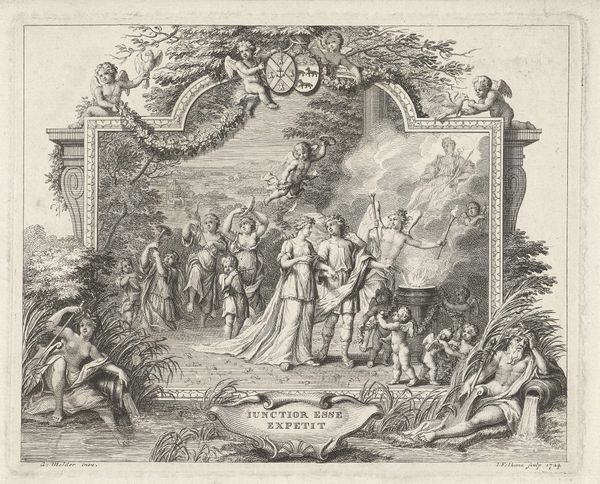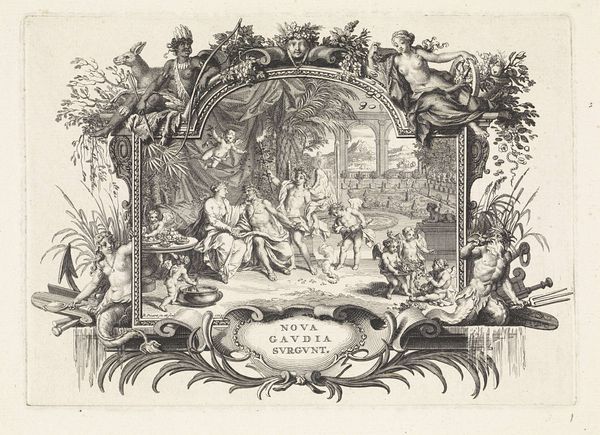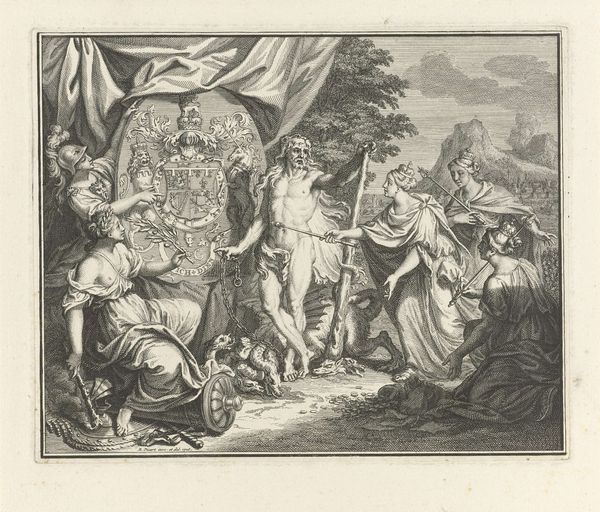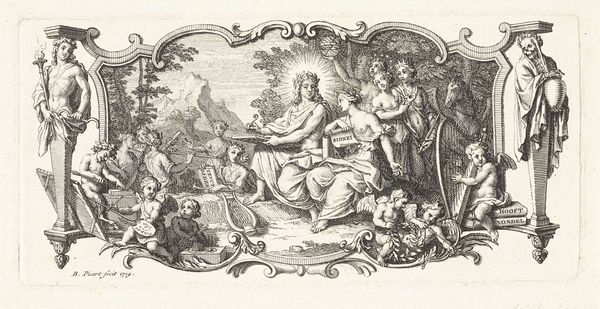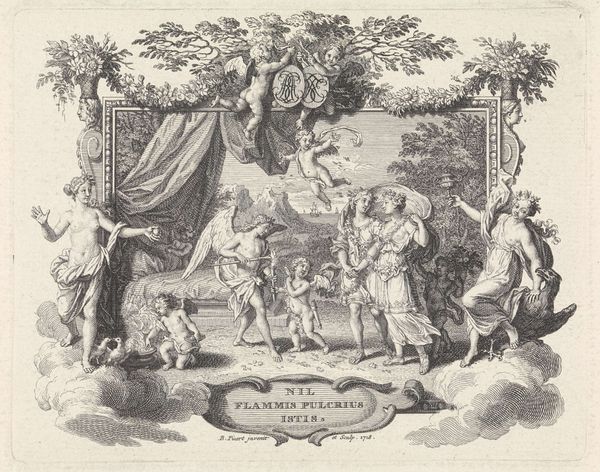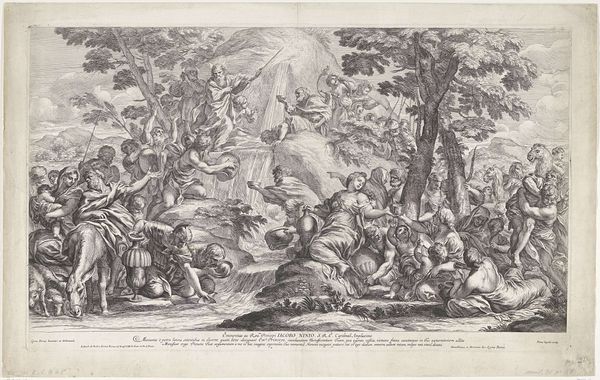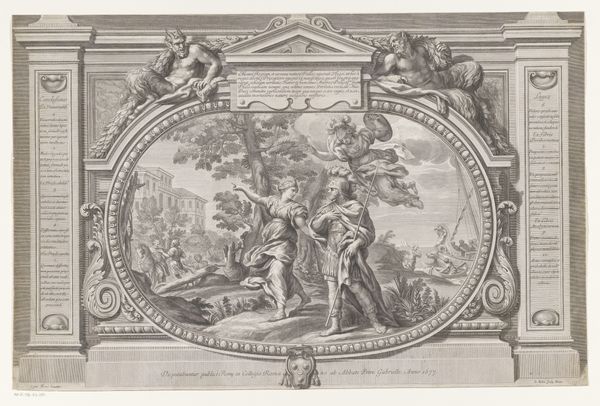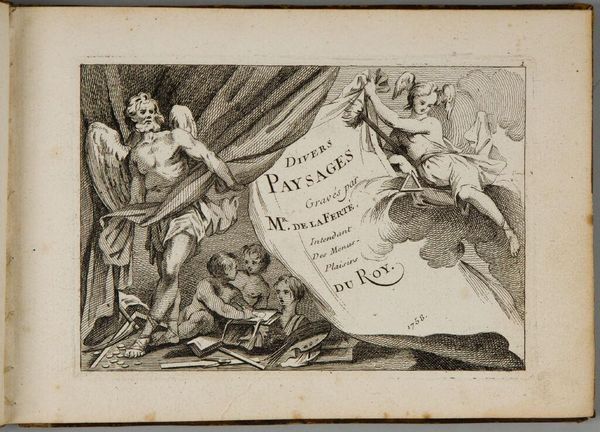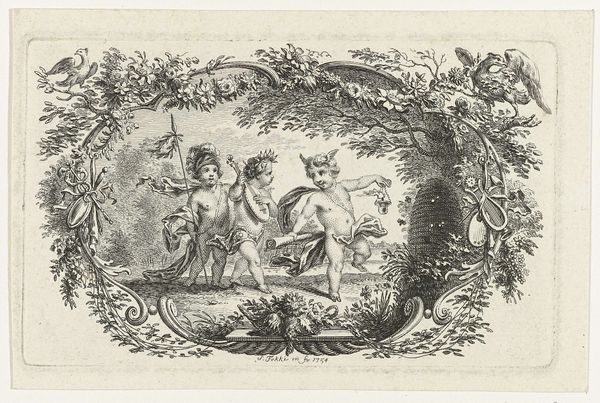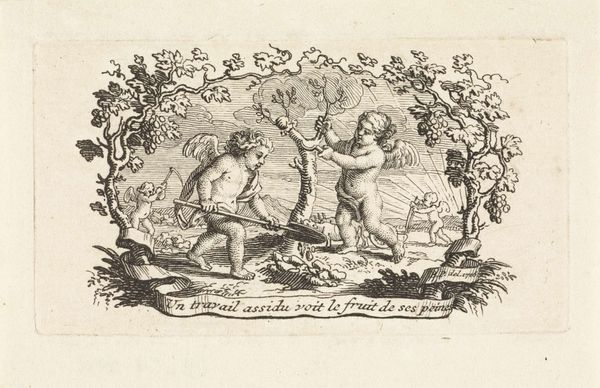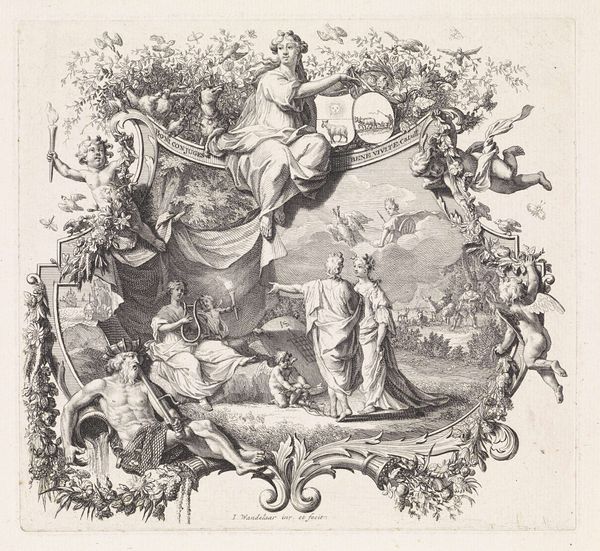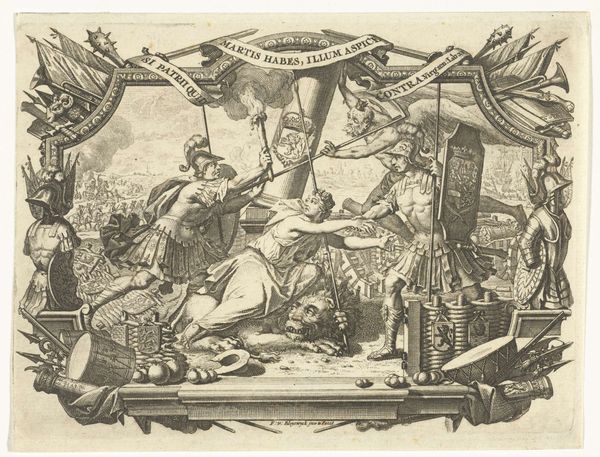
drawing, ink
#
drawing
#
allegory
#
baroque
#
ink
Dimensions: height 51 mm, width 73 mm
Copyright: Rijks Museum: Open Domain
Curator: Bernard Picart rendered this "Vignet met zittende vrouw omringd door putti" between 1683 and 1733, and what immediately jumps out to you about this drawing, Editor? Editor: What I notice first is the swirl of emotion—a cascade of bittersweet sentiments wrapped up in ink. The cherubs give it a playful vibe, yet the overall effect is rather somber. Curator: Precisely, Picart here crafts a classic Baroque allegory using ink on paper. The method matters. A readily available, comparatively cheap medium, perhaps intended for wide circulation. Note the etymology: vignet. It suggests wine and abundance. Editor: And that makes sense; looking at it closer, the vine frame and frolicking putti lend it an almost bacchanalian air. It feels…celebratory despite its melancholy tone. I think about what parties might've commissioned something like this! Curator: Considering the socio-economic structures of the period—a Dutch Republic heavily invested in overseas trade—the consumption habits of the bourgeoisie are hard to overlook when deciphering artwork such as this, its function, what needs it satisfied… Editor: Right! Like what kind of spaces these graced. I see drawing rooms, maybe studies filled with curiosities gathered from across the globe, illuminating everything through shadow, and…Well, those putti feel a bit like me today. Some days you dance, some days you drag crates full of responsibilities. Curator: An excellent point. How the social conditions determine that relationship between bittersweet emotion and everyday reality, which impacts production and consumption itself. The interplay here is not just visually rich; it's materially contingent. Editor: Materially contingent, you say. Well, looking at how fragile the ink line is, the transient nature of its existence and our attempts to conserve that trace...It hits on our limited time. Like the echo of laughter just after it ends. Curator: So, in essence, we come to terms with art as historical documents reflecting particular manufacturing processes and cultural norms. But with individual and human interpretation… It is really amazing how ink can carry it. Editor: It really does!
Comments
No comments
Be the first to comment and join the conversation on the ultimate creative platform.
